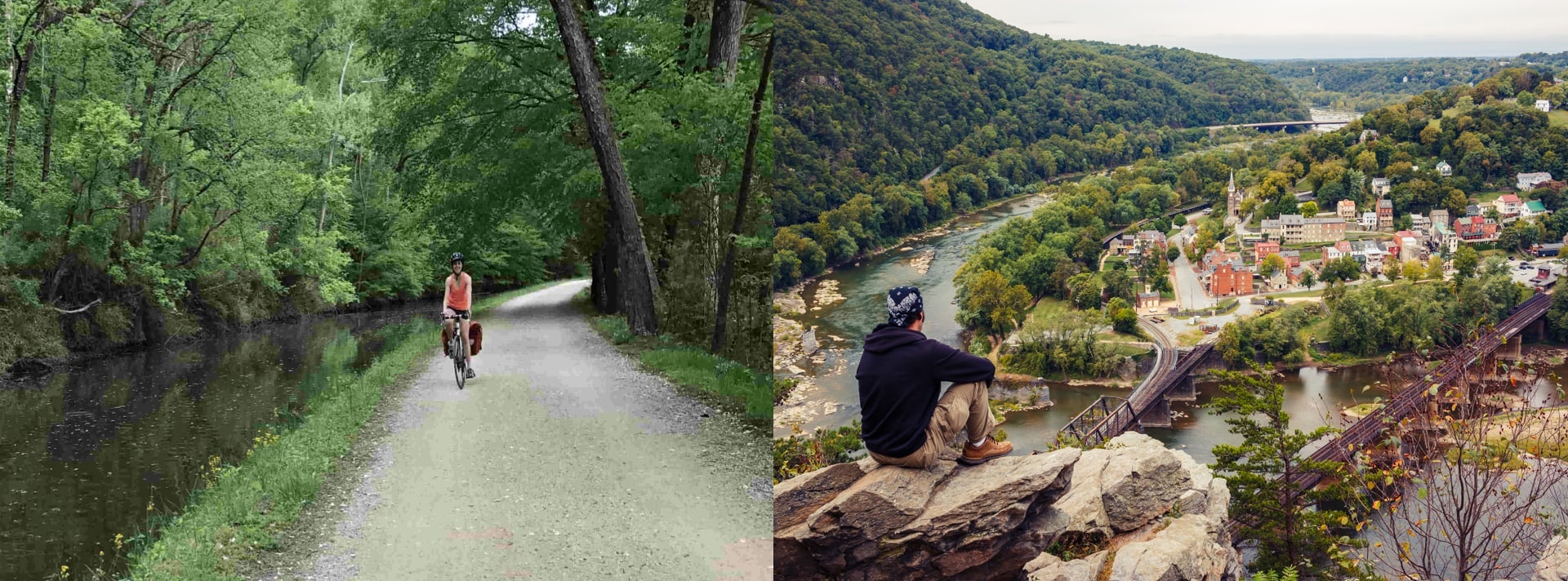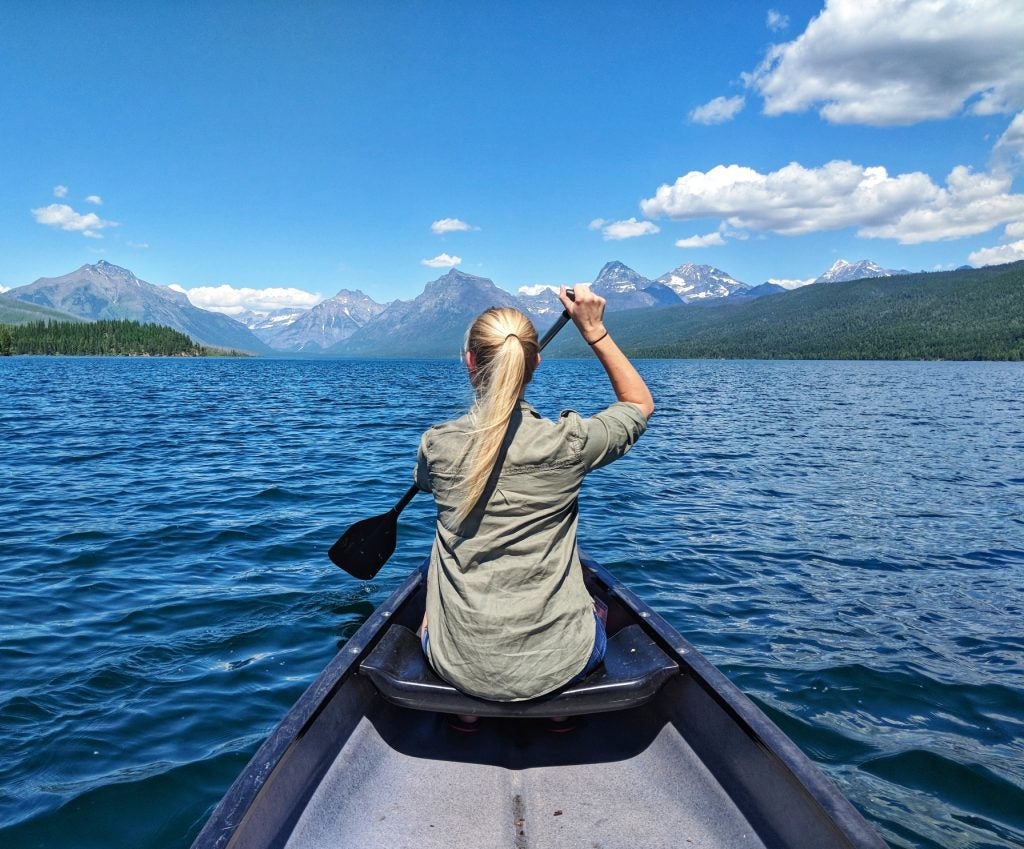There’s a particular feeling of liberty that comes with being able to hop on a bike from a city apartment and ride directly to a campsite far from the bustle, surrounded by lush greenery and a river, in just a few hours. The Chesapeake and Ohio Canal towpath, or C&O Canal Towpath, which connects Washington, D.C. with Cumberland, Maryland through 185 miles of flat trails perfect for biking, allows you to feel just that.
The leafy path winds its way between the old canal, once used to ship coal from the Allegheny Mountains to the west, and the Potomac River on the other. The path also doubles as a national historical park known to hikers, joggers and commuters from the city as underrated for its easy, accessible bike-packing and camping.
Bike From the City to the Campsite on the C&O Canal Towpath
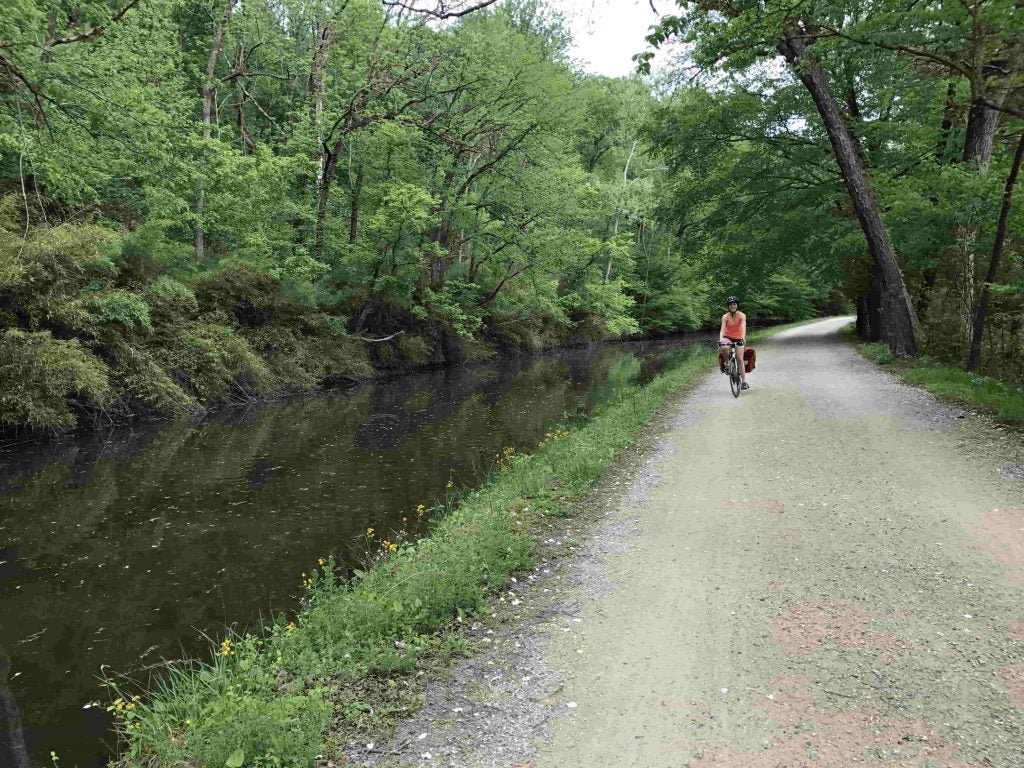
Image from Camille von Kaenel
Most can do the entire C&O Canal towpath from D.C. to Cumberland in around five days, an appropriate pace even for kids. From Cumberland, ambitious bikers can keep going to Pittsburgh on the Great Allegheny Passage, for a full 300 miles of bikepacking. If you just have a day or two, the C&O Canal towpath also makes a great out-and-back adventure.
How to Camp within Biking Distance from the City

Image of Horsepen Branch campsite at mile 26, from Camille von Kaenel
The C&O Canal towpath offers many bikepacking sites, with two general types: tent and primitive RV campgrounds, which are car-accessible and usually come with a fee and a reservation, and hiking-biking sites, which are accessible only to hikers and bikers on a free, first-come, first-served basis. The first one of these is Swain’s Lock at mile marker 16, which has nearby vehicle access. Others are far more remote.
We’ve collected some of The Dyrt campers’ favorite campgrounds on the C&O Canal towpath:
- Swain’s Lock Hiker-Biker Overnight Campsite, mile marker 16
- Brunswick Family Campground, mile marker 54
- Harper’s Ferry KOA, mile marker 59
- Hagerstown Jellystone Campground, mile marker 99.4
- Fort Frederick State Park, mile marker 112.4
- Happy Hills Campground, mile marker 129.2
- Paw Paw Tunnel Campground, mile marker 156.2
- Spring Gap Campground, mile marker 173.3
Bike Washington’s C&O Canal Bicycling Guide maintains a good list of private, hiker-biker and drive-in campsites along the trail. Check out the website for mile-by-mile recommendations for food and detours too.
The hiker-biker campsites all offer a fire-pit, picnic table, water and toilets, although the water isn’t always completely potable, so bring iodine tablets. The campsites are maintained by the National Park Service every 10 miles or so along the trail. Five to ten people can stay at each, and they rarely if ever get full.
5 Tips to help you make the most of your C&O Canal Bikepacking trip
From historic Georgetown in D.C., the towpath takes visitors to the turbulent Great Falls, the picturesque drop point for the Potomac River on its journey to the Chesapeake Bay. After that, the trail gets more lonesome, with herons and deer for company, as it winds its way to White’s Ferry, then Harper’s Ferry and on to Cumberland. Cute Maryland towns are always nearby, with creameries and breweries for a quick refresher.
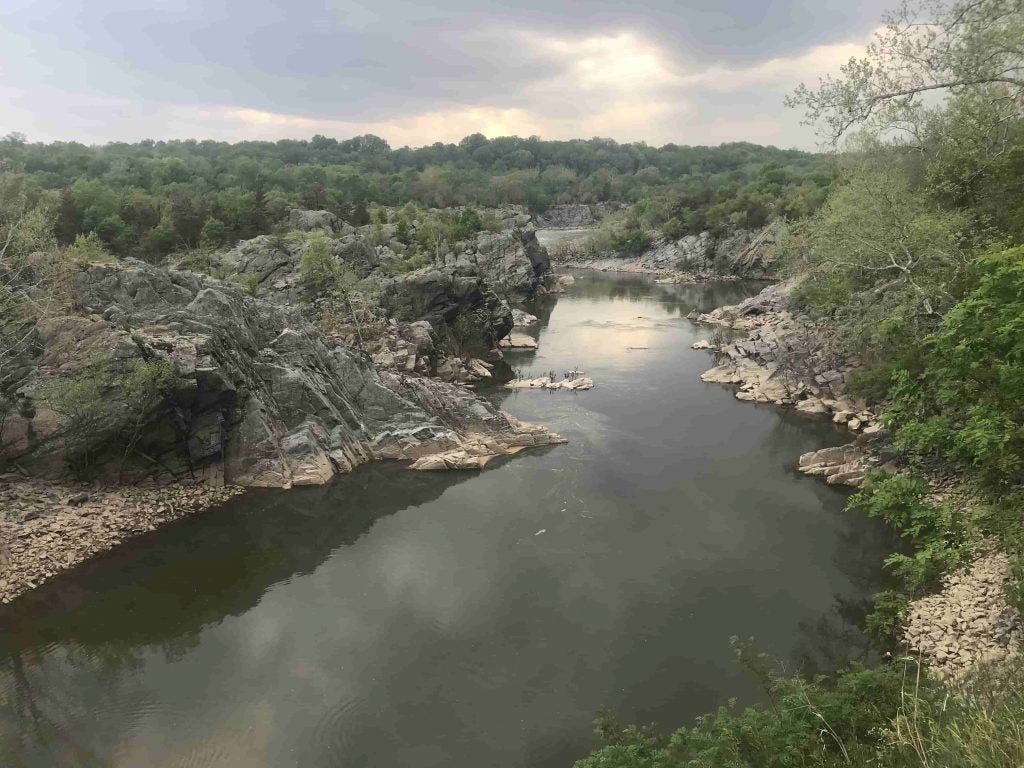
Image of the Potomac River near Great Falls, Maryland from Camille von Kaenel
Here’s what you should keep in mind when going bikepacking on the C&O Canal towpath.
1. Read up on the history of the C & O Canal
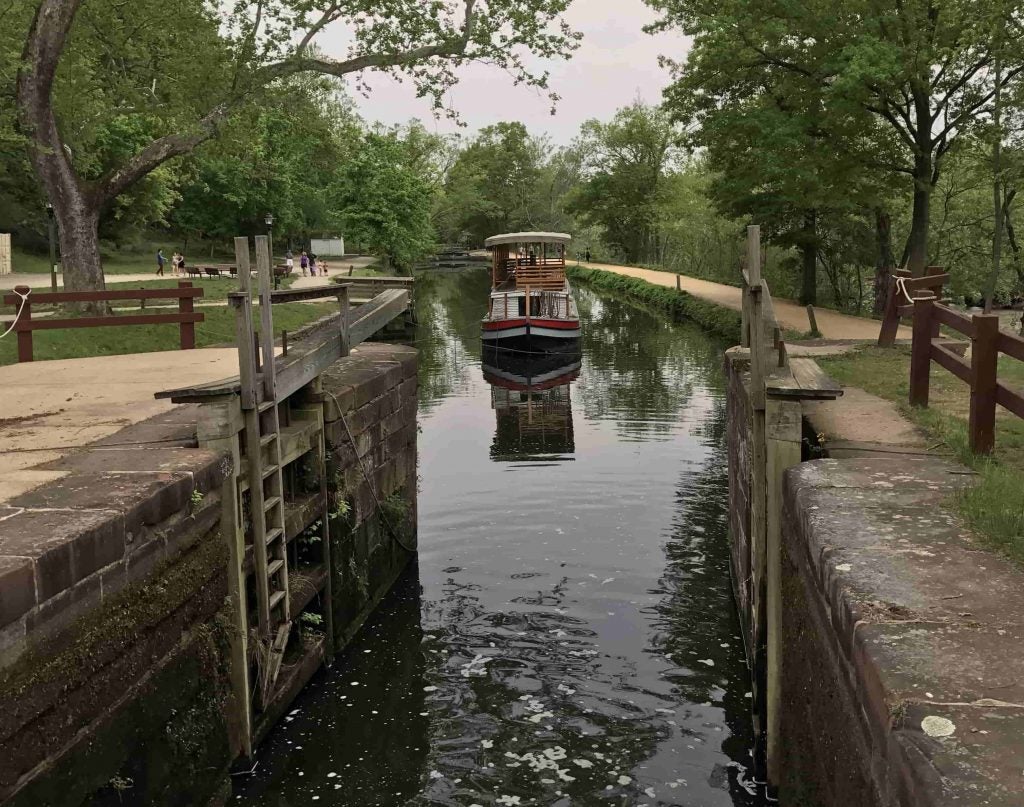
The Charles F. Mercer canal boat at Great Falls. The National Park Service will resume offering rides in 2019. Image from Camille von Kaenel
The C&O Canal and its towpath were built in the early 19th century. It was used primarily to bring coal from the Allegheny Mountains to Washington D.C. and provided jobs to people living at both ends and along the banks of the Potomac River. The National Park Service took over in the 1960s to develop the towpath into a bike and pedestrian way and preserve the many historic lock houses, locks and aqueducts. There 74 historic and picturesque locks along the trail, in various stages of preservation.
Today, there are interpretative signs all along the path, and they’re worth stopping at. You could learn about the women who rented out rooms and sold meals at the Great Falls Tavern Hotel in the early 20th century. Or learn about the 12′ x 12′ cabins dotting the path, the ones that “canal families” would live in during the five- to seven-day journey from Cumberland to Georgetown centuries before, in harsh and sometimes fatal conditions.
2. Prepare for bumpy trail conditions
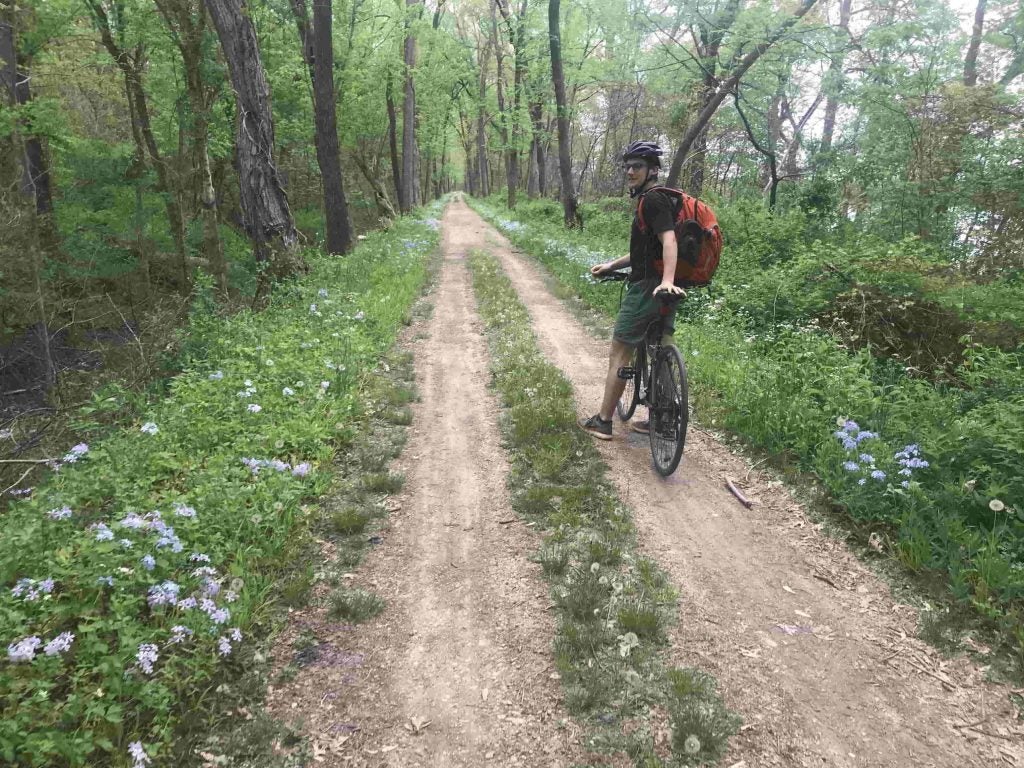
Ditch backpacks and road bikes, as pictured, for hybrids or mountain bikes and panniers and bikepacking bags on the C&O Canal towpath. Image by Camille von Kaenel
The trail is a combination of gravel and hard and loose dirt. It can be bumpy, especially after the first 20 miles, and hazards like potholes and mud are not uncommon. For this reason, it’s best to tackle the towpath with tires at least 35mm wide. And don’t forget to bring a patch kit with you!
Torrential rains, floods and fallen trees have washed out or damaged parts of the trail in the past, leading to temporary closures. The National Park Service alerts visitors to conditions of the trail on its website.
3. Bring gear to enjoy the river
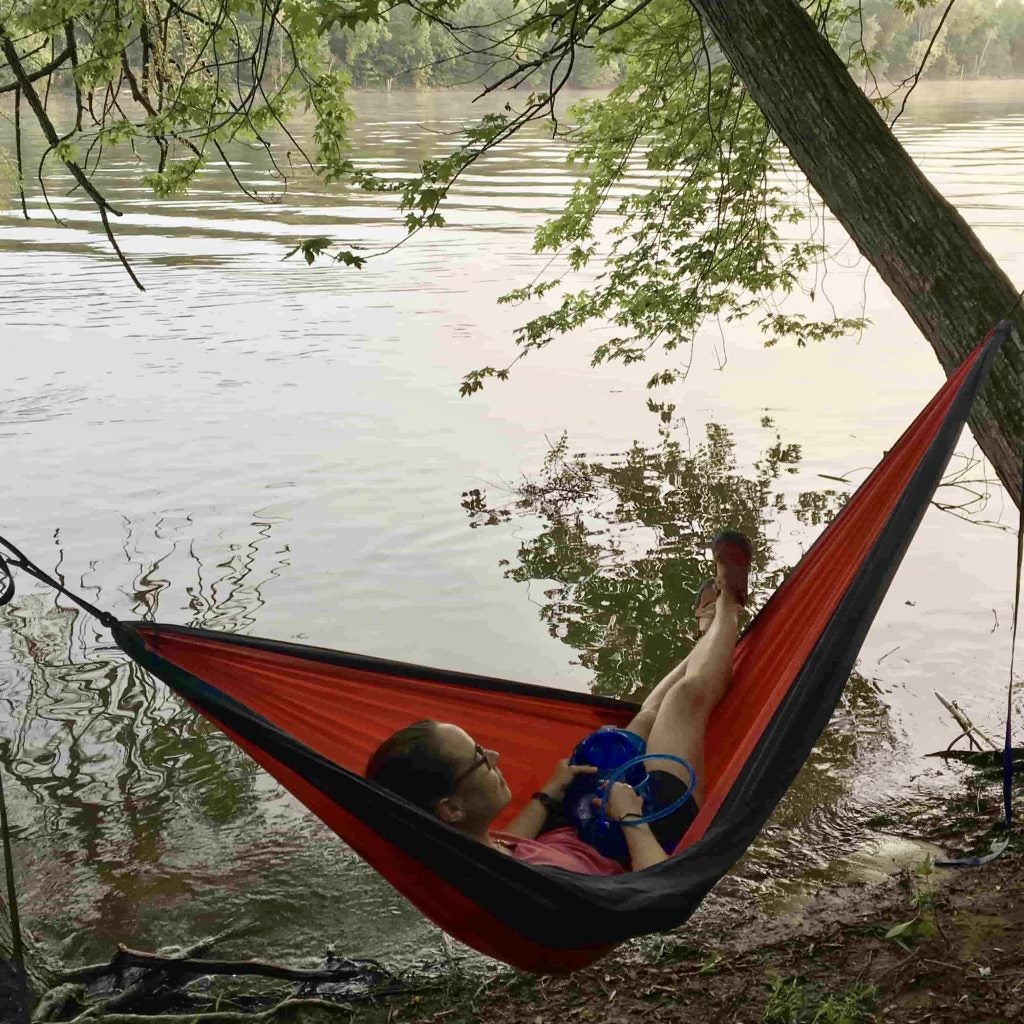
The author enjoying her hammock. Image from Camille von Kaenel
The Potomac River is not just lined with monuments and cherry blossoms. Campers along the C&O Canal towpath will get to know a whole different side to the storied river.
The farther you get out of the city, the cleaner the water gets. That means you can fish and even swim. Outfitters in the towns along the river offer all sorts of water activities, like floating and kayaking.
Make sure to bring a hammock for maximum enjoyment of the riverside. Note that they’re allowed only at the hiker-biker campsites.
4. Take your time in Harper’s Ferry
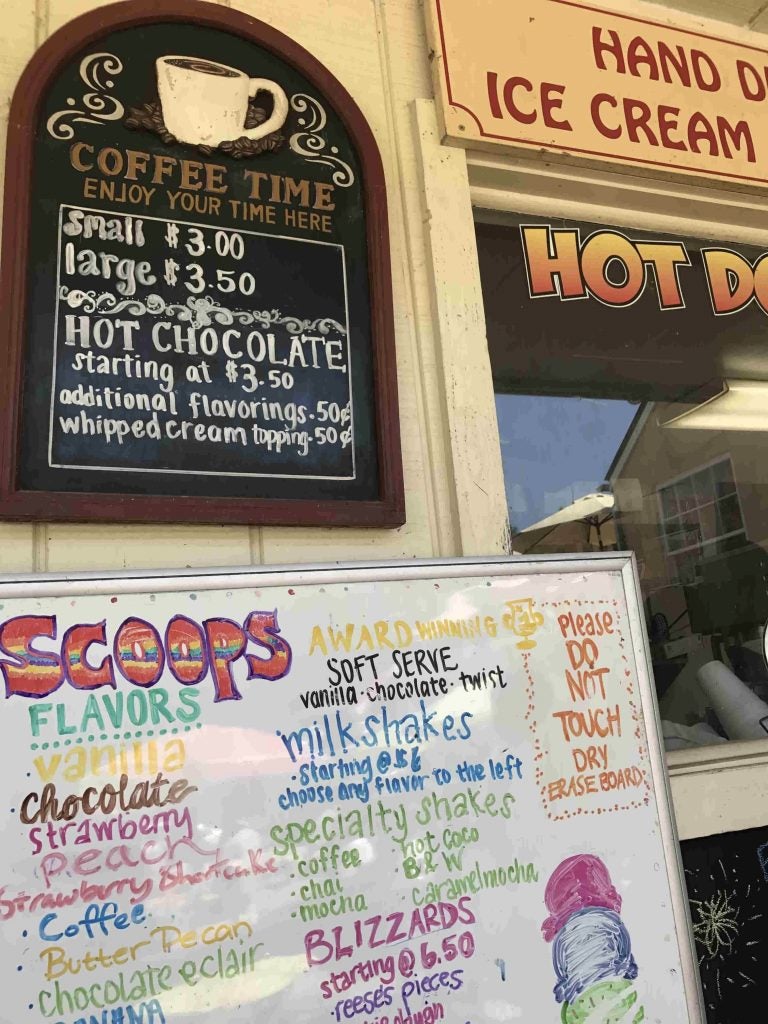
Grab some ice cream in Harpers Ferry. Image from Camille von Kaenel
The C&O Canal towpath brings hikers and bikers through Harpers Ferry, the historic town at the confluence of the Shenandoah and Potomac Rivers. It’s worth a stop to explore. Thomas Jefferson stopped by in 1783 and called the view of the Potomac carving through the valley from the town “perhaps one of the most stupendous scenes in nature“. The town is also where John Brown led his abolitionist raid in 1859.
Today, it’s mostly a tourist town with plenty of interpretive historical sites, shopping and food—including ice cream and fries that taste glorious after miles of biking. Take a short hike up to Maryland Heights for a view of the town if you’ve got some spare time and muscle.
5. Amtrak has you covered for the ride back
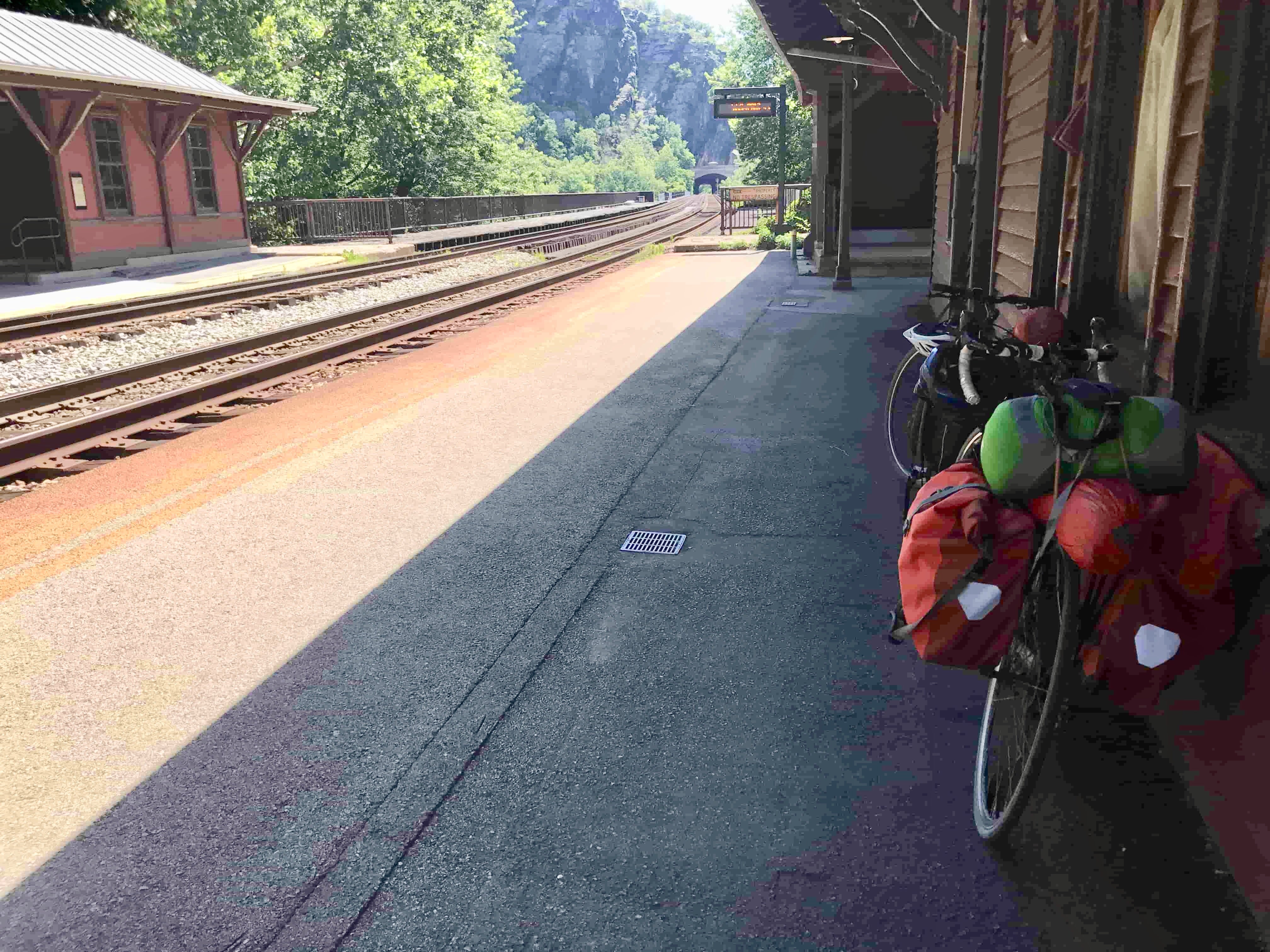
Image by Camille von Kaenel
You can easily take the train back to Washington, D.C. from Cumberland if you’re feeling tapped-out from the more than 180-mile trip west. The Amtrak Capitol Limited stops once a day, and some commuter trains run during the week as well. Be sure to reserve in advance to ensure there’s space for your bike.
Related Campgrounds
- Little Orleans Campground, Little Orleans, MD
- Patapsco Valley State Park, Ellicott City, MD
Popular Articles:
Articles on The Dyrt Magazine may contain links to affiliate websites. The Dyrt receives an affiliate commission for any purchases made by using such links at no additional cost to you the consumer.

